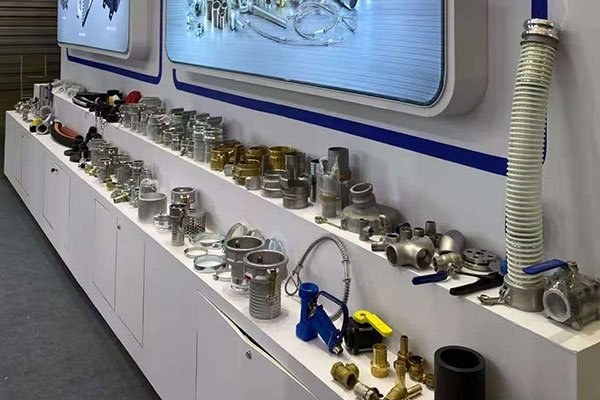Selecting the wrong Camlock coupling can lead to leaks, chemical incompatibility, equipment failure, and serious safety hazards. This frustration is entirely avoidable. Our simple 5-step buyer’s guide will give you the confidence to choose the right Camlock coupling for your specific application, ensuring optimal performance, safety, and cost-effectiveness.

Step 1: Identify the Fluid or Media
The chemical composition of what you’re transferring is the most important factor in your decision.
- What to ask: What specific fluid, gas, or solid (e.g., powder, slurry) will flow through the coupling?
- Why it matters: Different materials resist corrosion and degradation differently. Using an aluminum coupling with a strong acid will cause rapid failure.
- Action: Make a list of all media the coupling will encounter, including cleaners and sanitizers.
Step 2: Select the Coupling Material
Based on your fluid, choose a material that offers full chemical compatibility.
- Stainless Steel (304 or 316): The premium choice for corrosive chemicals, high temperatures, high pressures, and sanitary applications (food, pharma). Excellent durability.
- Aluminum: The all-rounder. Ideal for non-corrosive applications like fuel, oil, water, and air. Lightweight and cost-effective.
- Polypropylene: A budget-friendly thermoplastic for highly corrosive chemicals at low temperatures and pressures. Not suitable for steam or high heat.
- Action: Consult a chemical compatibility chart. When in doubt, 316 stainless steel is the safest, albeit more expensive, choice.
Step 3: Determine the Correct Size
Size is critical for flow rate and preventing pressure drop.
- What to ask: What is the inner diameter (I.D.) of your hose or pipe?
- Why it matters: The coupling size (e.g., 1″, 2″, 3″) must match the hose I.D. to ensure a proper fit and avoid flow restrictions.
- Action: Measure your hose or pipe’s inner diameter. Do not guess. Standard sizes are in inches (e.g., 1″, 1.5″, 2″, 3″, 4″).
Step 4: Confirm Pressure and Temperature Ratings
Never operate a coupling beyond its designed limits.
- Pressure (PSI/Bar): Know your system’s maximum operating pressure. Include a safety margin for pressure spikes. Stainless steel handles the highest pressures, polypropylene the lowest.
- Temperature (°F/°C): Know the temperature of your media and the environment. Remember, high temperature can lower the effective pressure rating of the coupling.
- Action: Always choose a coupling whose ratings exceed your system’s maximum pressure and temperature.
Step 5: Choose the Right Type and Seal
Complete your system by selecting the correct ends and seal material.
- Type (A, B, C, D, etc.): Refer to our [Camlock Types Guide]. Remember, Type A (Male) always connects to Type B (Female). Types C, D, E, and F adapt to different threaded connections.
- Seal Material (O-Ring): The O-ring must be compatible with your fluid and temperature.
- Buna-N (Nitrile): Good for general purpose use (water, petroleum, air).
- Viton® (FKM): Excellent for high temperatures and chemicals like oils, acids, and fuels.
- EPDM: Best for hot water, steam, and weathering.
- Action: Plan your connection points and select the adapter types needed. Specify your O-ring material at the time of purchase.
Still Have Questions? You’re Not Alone. Choosing the right coupling is a technical process. Contact our experts today for free, personalized help in selecting the perfect Camlock coupling for your needs.
